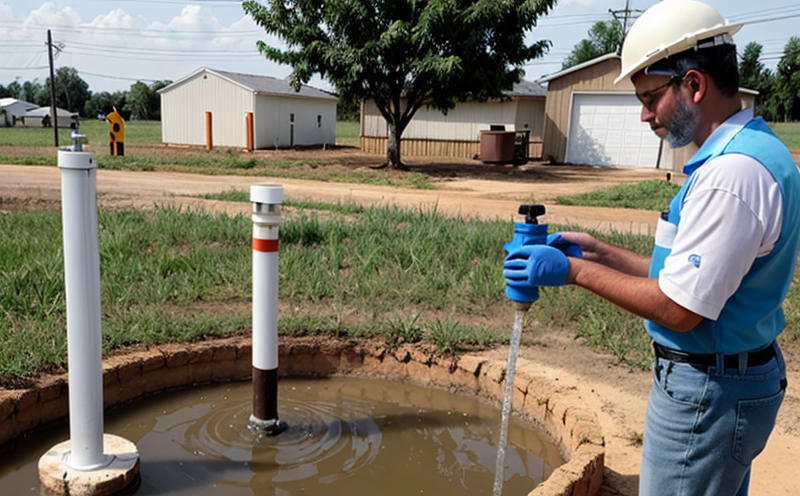EPA Method 415.1 Total Organic Carbon in Groundwater
The EPA Method 415.1 is a regulatory standard designed to determine the total organic carbon (TOC) content in groundwater samples. This method is critical for environmental monitoring and compliance with federal regulations, particularly in industries that rely on groundwater resources or have operations near aquifers.
Groundwater serves as a vital resource for drinking water supplies, agricultural irrigation, and industrial processes. Contamination from organic compounds can pose significant risks to human health and the environment. EPA Method 415.1 provides a standardized approach to quantify these contaminants, ensuring that groundwater quality meets safety standards.
The method employs combustion analysis using an oxygen-rich flame to convert all carbon in the sample to CO2. This conversion is then measured by infrared detection. The precision and accuracy of this process are paramount for reliable results. Compliance with EPA Method 415.1 ensures that water utilities, industrial plants, and regulatory bodies can make informed decisions regarding groundwater usage.
The instrumentation required for EPA Method 415.1 includes a TOC analyzer equipped with an oxygen-rich combustion chamber and infrared detection system. Sample preparation involves the collection of representative groundwater samples in pre-cleaned containers. The sample must be processed promptly to prevent contamination or degradation, which could lead to inaccurate results.
Acceptance criteria for EPA Method 415.1 include ensuring that the TOC concentration falls within specified limits as defined by regulatory bodies. This method is particularly useful for detecting low levels of organic compounds, making it a sensitive tool in environmental monitoring. The use of this method helps to identify potential sources of contamination and allows for targeted remediation efforts.
The importance of EPA Method 415.1 cannot be overstated, especially in sectors that depend heavily on groundwater resources. Compliance with this standard ensures public health protection, environmental stewardship, and adherence to legal requirements. The method is widely recognized and used across various industries, including water utilities, agriculture, manufacturing, and environmental consulting.
By leveraging EPA Method 415.1, organizations can demonstrate their commitment to sustainable practices and regulatory compliance. This ensures that groundwater resources are safeguarded for future generations while maintaining the integrity of current operations.
Industry Applications
| Industry | Application |
|---|---|
| Water Utilities | Monitoring and compliance with EPA regulations for drinking water supplies. |
| Agriculture | Ensuring that irrigation practices do not contaminate groundwater resources. |
| Manufacturing | Detecting potential sources of organic contamination in industrial processes. |
| Environmental Consulting | Providing expert analysis to support environmental impact assessments and remediation projects. |
EPA Method 415.1 is a cornerstone for industries that rely on groundwater resources. Its application extends beyond mere compliance; it plays a vital role in protecting public health, preserving natural environments, and ensuring sustainable practices. This method supports a wide range of applications across various sectors.
Quality and Reliability Assurance
The quality and reliability of EPA Method 415.1 results are essential for accurate environmental monitoring and compliance with regulatory standards. To ensure the integrity of these tests, several quality assurance measures are implemented:
- Calibration: Regular calibration of TOC analyzers to maintain accuracy.
- Standard Reference Samples: Use of certified reference materials for method validation and proficiency testing.
- Data Validation: Verification of results using alternative methods or independent laboratories.
- Sample Handling: Adherence to strict sample handling protocols to prevent contamination.
These measures ensure that the data generated from EPA Method 415.1 is reliable and can be trusted for decision-making purposes. The use of certified reference materials, such as those provided by organizations like NIST (National Institute of Standards and Technology), helps in establishing a baseline for comparison.
Data validation through alternative methods or independent laboratories adds an additional layer of assurance. This approach ensures that the results are consistent across different testing environments and methodologies. Strict sample handling protocols further minimize the risk of contamination, which could lead to erroneous data.
By implementing these quality assurance measures, laboratories can provide accurate and reliable TOC measurements in groundwater samples. These results are crucial for maintaining compliance with EPA regulations and ensuring public health protection.





